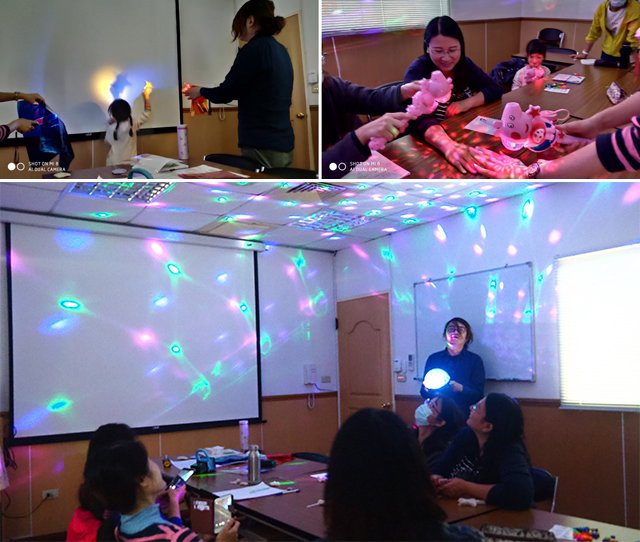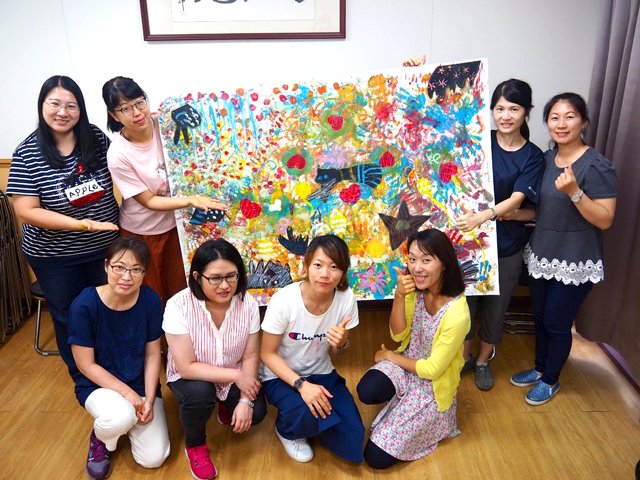Arts and crafts are important for the cognitive and emotional development of children. PaPa’s Pad ” offers engaging crafts and innovative games that children can play with and use. However, sometimes children may refuse to participate (especially when children with different ages in the same class). What shall we do with these children? This is the beginning of the workshop phase of our project.
In order to make children more engaged and active in art and craft activities, we invited teacher Chen to teach our teachers and design courses for us. Chen chose paper craft works as course topic for demonstration. She helped the teachers make an analysis to see which factors were negative for children to enjoy creating, and how teachers could help them. Chen suggested teachers could rewrite stories and use music, lights to change the atmosphere in the classroom, so that students would be motivated to participate. We hope that through small class size, interactive and hands on learning, we can have our students experience the joy of creating

(Right)The same act may bring different results for different situations. The purpose of the activity “spreading paper fragments” in our course was to help rebellious students become engaged.
Except cutting and drawing on papers, our teachers came up with more new ideas, such as rolling, kneading, pinching, folding, and tearing papers and designed creative games. Furthermore, our teachers also added story elements into activities to attract children’s attention, especially for children with low participation. As the story went, teachers would lead discussions sharing children’s thoughts and feelings.

At the end of the workshop, Teacher Chen and our teachers discussed the meaning of each work and the connection between the work and the child himself/herself. We could observe children’s ideas, preferences, life through their works. Through the process of crafting, teachers and children would have more topics to share. It could help teachers to understand their children better, getting close to them and build firm trust with each other. One of our teachers shared fascinating feedback with us. “Through crafting, we didn’t only learn how to interact with our children, but also learn how to manage our feelings and stress. This workshop made me become more energetic with my work and more confident with leading an art/craft class.”

People would be more creative without references.

